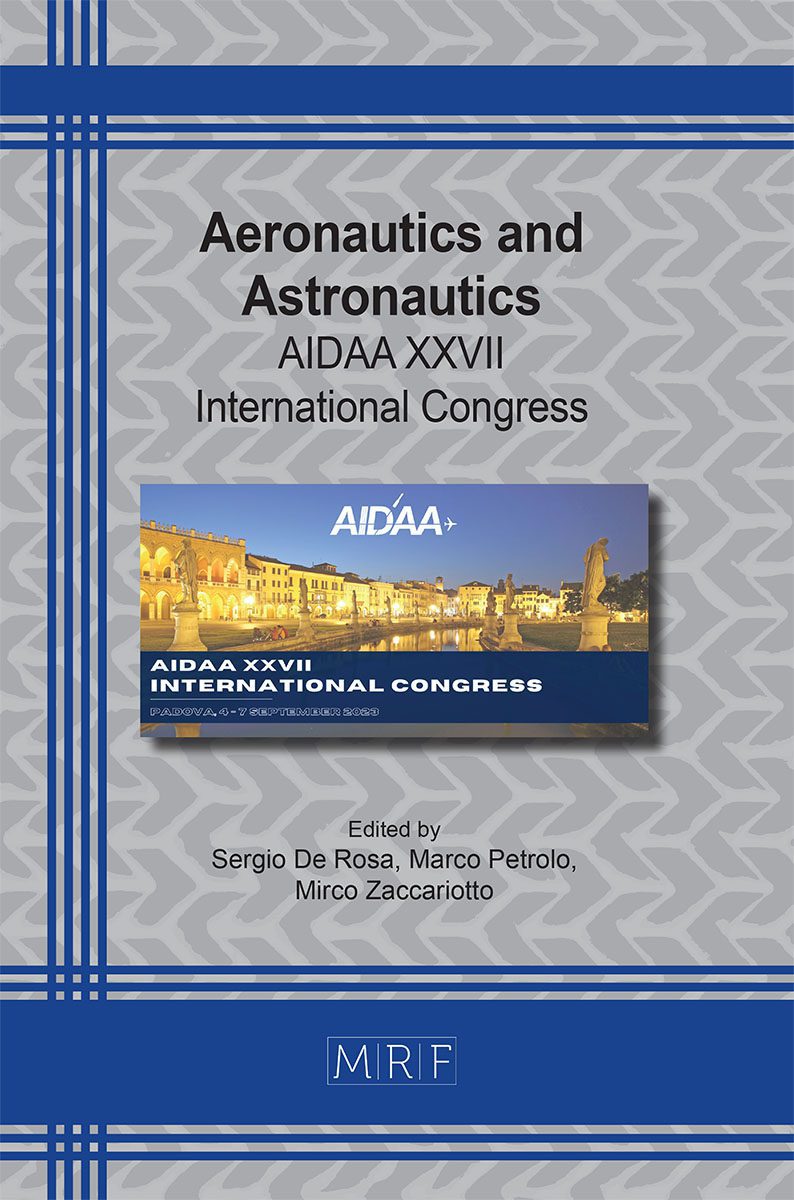Comparison of lattice core topologies in sandwich structures
G. Mantegna, C.R. Vindigni, D. Tumino, C. Orlando, A. Alaimo
download PDFAbstract. Hybrid sandwich structures are often used in the aviation industry thanks to their high strength-to-weight ratio and resistance to bending and buckling. Today, through Additive Manufacturing technologies, it is possible to use different materials to create topology-optimized structures with complex shapes using lattice structures. In this work, a numerical approach is proposed to study the behaviour of a hybrid sandwich structure which can be used as a reinforcement for a control surface of a lightweight aircraft. A comparative analysis is conducted between a conventional honeycomb lattice core and lattice truss core structures.
Keywords
Additive Manufacturing, Design for Manufacturing, Lattice Structures, Hybrid Structures
Published online 11/1/2023, 4 pages
Copyright © 2023 by the author(s)
Published under license by Materials Research Forum LLC., Millersville PA, USA
Citation: G. Mantegna, C.R. Vindigni, D. Tumino, C. Orlando, A. Alaimo, Comparison of lattice core topologies in sandwich structures, Materials Research Proceedings, Vol. 37, pp 296-299, 2023
DOI: https://doi.org/10.21741/9781644902813-64
The article was published as article 64 of the book Aeronautics and Astronautics
![]() Content from this work may be used under the terms of the Creative Commons Attribution 3.0 license. Any further distribution of this work must maintain attribution to the author(s) and the title of the work, journal citation and DOI.
Content from this work may be used under the terms of the Creative Commons Attribution 3.0 license. Any further distribution of this work must maintain attribution to the author(s) and the title of the work, journal citation and DOI.
References
[1] B. Castanie, C. Bouvet, and M. Ginot, “Review of composite sandwich structure in aeronautic applications,” Composites Part C: Open Access, vol. 1, p. 100004, Feb. 2020. https://doi.org/10.1016/j.jcomc.2020.100004.
[2] J. Bühring, M. Nuño, and K.-U. Schröder, “Additive manufactured sandwich structures: Mechanical characterization and usage potential in small aircraft,” Aerosp Sci Technol, vol. 111, p. 106548, Feb. 2021. https://doi.org/10.1016/j.ast.2021.106548.
[3] N. Wicks and J. W. Hutchinson, “Optimal truss plates,” Int J Solids Struct, vol. 38, no. 30–31, 2001. https://doi.org/10.1016/S0020-7683(00)00315-2.
[4] C. G. Ferro, S. Varetti, G. De Pasquale, and P. Maggiore, “Lattice structured impact absorber with embedded anti-icing system for aircraft wings fabricated with additive SLM process,” Mater Today Commun, vol. 15, 2018. https://doi.org/10.1016/j.mtcomm.2018.03.007.
[5] K. Kohsaka, K. Ushijima, and W. J. Cantwell, “Study on vibration characteristics of sandwich beam with BCC lattice core,” Mater Sci Eng B Solid State Mater Adv Technol, vol. 264, 2021. https://doi.org/10.1016/j.mseb.2020.114986.
[6] D. Tumino, A. Alaimo, G. Mantegna, C. Orlando, and S. Valvano, “Mechanical properties of BCC lattice cells with waved struts,” International Journal on Interactive Design and Manufacturing (IJIDeM), 2023. https://doi.org/10.1007/s12008-023-01359-9.
[7] A. Kumar, N. Muthu, and R. G. Narayanan, “Equivalent orthotropic properties of periodic honeycomb structure: strain-energy approach and homogenization,” International Journal of Mechanics and Materials in Design, 2022. https://doi.org/10.1007/s10999-022-09620-x.































